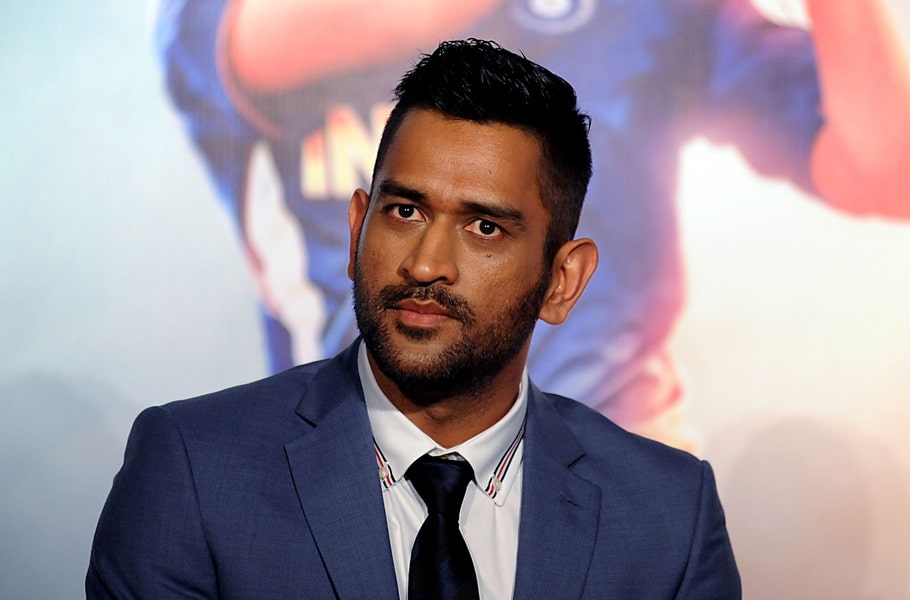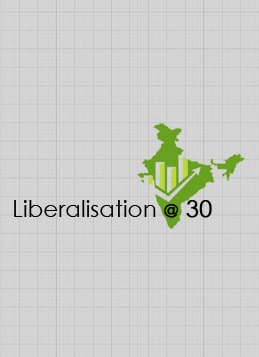
Cricket Commercial: How reforms injected cricket with MSD-LSD
As part of our series on 30 years of liberalisation, we revisit the highs injected into the gentlemen's game by an open economy.


A Federal series on three decades of reforms
As part of our series on 30 years of liberalisation, we revisit the highs injected into the gentlemen’s game by an open economy
Cricket Commercial: How reforms injected cricket with MSD-LSD
Uploaded 22 November, 2020

Cricket enthusiasts know almost everything about MSD – Mahendra Singh Dhoni. As ‘Captain Cool’, he led the country to the top of test rankings, and is the only captain to win the three international trophies in the short formats – World Cup T-20, World Cup ODI, and Champions Trophy. As batsman-wicketkeeper, we remember his helicopter shots, grand finishes, and unorthodox antics behind the stumps.
During his prime, an entire nation, and other parts of the world, were on the MSD high. He was the miraculous-seductive drug that swayed millions of fans.
We will talk about its effects on cricket and country in a later piece. In this article, we wish to introduce another cricketing high, LSD, a substance that was more potent, addictive, and hallucinatory. Everyone subconsciously knows about the alternative expansion of the acronym. None of you actively thought about it, at least not till now. Yes, it stands for the three Tsars – Modi (Lalit), Srinivasan (N), and Dalmiya (Jagmohan) – who collectively changed the gentleman’s game.
If two words can encapsulate their impact, they are ‘Cricket Commercial’. One can add variations to the phrase – ‘Cricket Entertainment’, ‘Cricket-Spectacle’, and ‘Celebrity Cricket’. Since the 1990s, they made cricket so wealthy that everyone who was connected with it – player administrator, advertiser, journalist, member of the telecast team, and aficionado – was drowned in the riches. In the process, the game was embroiled in egos, power struggles, corruption, and allegations.
The three administrators, made and unmade the game. They re-built and destroyed it. They added a dazzling and eye-popping veneer to it that bamboozled the world. Contradictions, divisive ones, became part and parcel of cricket. The transformation benefits the viewers, and makes them suffer. The game is better, and worse. If the purists go insane, blame it on the new-and-hip wonder drug. If the buffs love the glitter and glory, give credit to the 21st century LSD.
At this stage, you begin to wonder what economic reforms have to do with this new high. In fact, everything! The market forces that the Narasimha Rao-Manmohan Singh duo unleashed were directly responsible for their rise and reign over the next three decades. Ironically, the regime that injected the Indian economy with liberal doses of capitalism opposed the inevitable era of ‘Cricket Commercial’. The State, and its monopolist-apologists battled against the entry of private interests in sports.
When Rao and Singh presented their reforms’ entree initially, one of the key policies was the entry of private sector in sectors hitherto restricted only for state-owned entities. These included, among others, telecom, oil and gas, and the Internet. More areas were added to the list later. Segments, where private presence was limited, were opened up too. Still, a few businesses remained sacrosanct – defence and, of course, media, especially TV broadcast and distribution.
However, as the doors to sectors were pushed wide open, the Centre, either willingly or otherwise, allowed new entrants in broadcast and cable distribution. The images of the First Gulf War in the early 1990s whetted the appetite of the Indian viewers. Simultaneously, enterprising, but small-time, entrepreneurs flung wires over poles, roofs, walls, and trees to usher in a chaotic, yet silent, cable revolution. Businessmen like Zee’s Subhash Chandra ventured into TV channels in 1992.
Until then, Doordarshan (DD), the state-owned broadcaster, controlled the entire TV arena. Under the 19th century Telegraph Act, the moves of the private players were illegal. But the broadcast and cable “pirates”, as a global media baron described them, thrived in the unruly world of airwaves and cable connections. The Tsunami-like waves entranced Dalmiya, who lorded over Cricket Association Bengal (CAB). The shrewd businessman that he was, he saw dollars in front of his eyes.
In 1992, BCCI sold the cricket telecast rights for the India-England series to Trans World International (TWI). DD, which enjoyed a monopoly over them, and asked BCCI to pay for such rights earlier, was caught on the wrong foot. The next year, DD was stumped, when CAB did the same with the rights for the forthcoming Hero Cup. The association rejected DD’s offer, and accepted TWI’s one for a minimum $550,000.
DD, with help from the Centre, opposed it. It went in to bat on a cloudy and breezy day, and knew that the ball could swing either way. Instead of walking on to the pitch, the two teams, DD and CAB, entered the courtroom. The ball was belted between the courts and corridors of power by the heavy willows on both sides. The Hero Cup telecast was a drab draw. TWI showed the later games, but the Supreme Court banned it from showing the crowds, or anything except cricket.
The subsequent legal matches were nerve-wracking, and the spectators sat on the edge of their seats. Not to watch cricket, but to observe the legal googlies and reverse-swings. The State and DD fought intensely to retain their monopoly. CAB wanted the fresh waves of liberalization to sweep away such stranglehold, as was the case in other sectors. The World Cup ODI was due in Indian subcontinent in 1996, and the rights were sold for $10 million, or 10 times the figure in the previous tournament.
In 1995, the apex court gave its final judgment. Like a half-filled glass can be viewed as either half-full or half-empty, so is the case with this order. It stated that CAB and BCCI could organize cricket matches. But they could not claim a constitutional right to operate a permanent or temporary TV station (this is what TWI would do). Airwaves were “public property” and meant for “public good”. The right to use them was not enshrined in the Constitution’s freedom of speech.
Government policy would decide the citizen’s right to use airwaves. The Telegraph Act was outdated, and new laws had to be consistent with the freedom of speech. A State monopoly was “unacceptable”. Broadcast media should be under public control. Until new laws are framed, the government had to deal with requests for the telecast rights by private citizens on merit, keeping in view the “public interest”. Ergo, the new Act had to allow telecast rights to private broadcasters.
Through a convoluted route, the order opened the floodgates for the flow of huge money into cricket. Telecast rights, cable boom, and private broadcast led to a phenomenal rise in Indian TV audience. In cricket, it was higher than the combined one in the rest of the cricket-playing nations. Sponsorship, advertising, and cricketers’ endorsements followed. Cricket was earlier ruled by corporate interests. But now, the involved amounts attained Himalayan heights.
Modi entered the stadium in grand style, when cricket was ready for another seismic shock. He put profits squarely at the center of the game. Through the Indian Premier League (IPL), he converted it into an entertainment and spectacle. The IPL was about cash, and only cash. The league’s former CEO said that Modi’s single-point concern was the bottom-line, and the boundary lines in the stadium could wane and wax as per the needs of the broadcaster and advertisers.
He sold everything in the IPL. The eight city teams went for a price of more than $700 million. The telecast rights for over a billion dollars. Sponsorships raked in more moolah. So did the team merchandises. He came up with ‘Time-Out’ to boost advertising time. The seconds allocated to market the league were sold commercially. The time between the overs, and the precious seconds between two deliveries served as ad-breaks. IPL was screened live in cinema theatres at a price.
After a decade, the IPL telecast rights were sold for $2.55 billion in 2018. A word of caution is a must. The amounts seem jaw-dropping, but they are not that impressive. The difference between a billion dollar that IPL was promised in 2008 for telecast rights and $2.55 billion a decade later isn’t much if an annual inflation of 10% is considered. Of course, the former deal was for 10 years, and the latter only five years.
Srinivasan who, like Dalmiya was BCCI President for several years, and controlled it like a master-puppeteer when he was not in official power, used the money to dole out patronage and consolidate power. He, like his predecessor, ensured that the Indian voice was the loudest in the ICC’s boardrooms, and every other nation bent to India’s (read: his) diktats. Like the old Maharajas and Princes, Srinivasan hoped to become the new Emperor of global cricket with a reign in perpetuity.
The reforms in Indian cricket, which were imposed by the same Supreme Court, which used economic reforms to let the money gush in decades ago, signalled the end of Srinivasan’s rule. This also signalled the demise of the LSD-effect. Yet, the drug has seeped into the bloodstreams of all the stakeholders, including the crowds and players. Its acidic high is witnessed, not just in wealth, but also in corruption.

